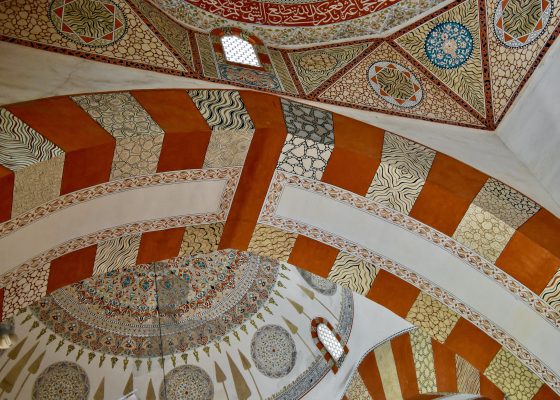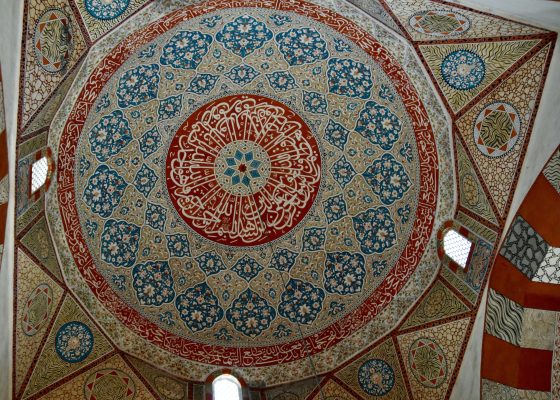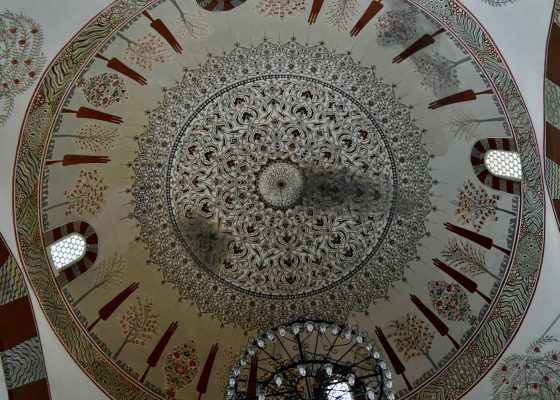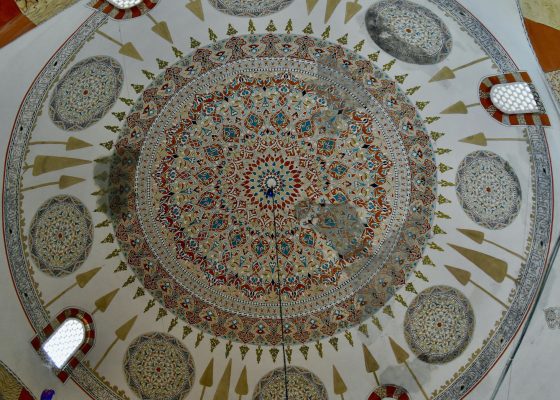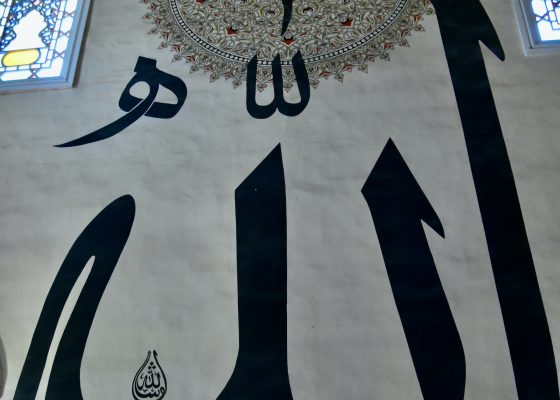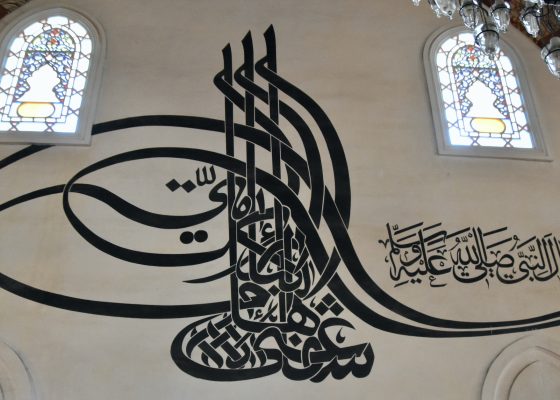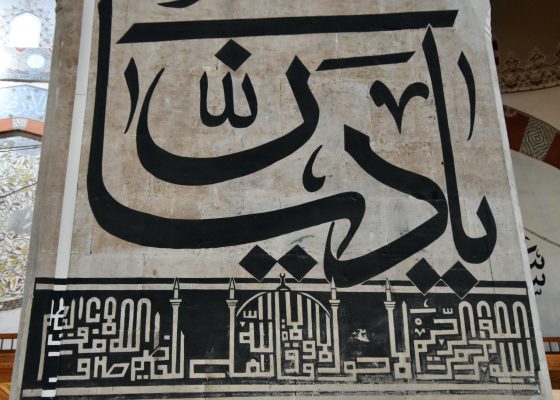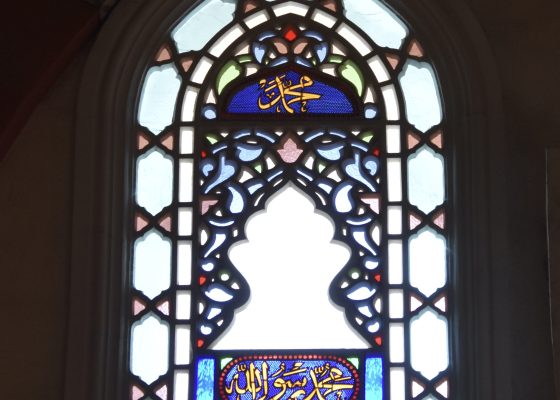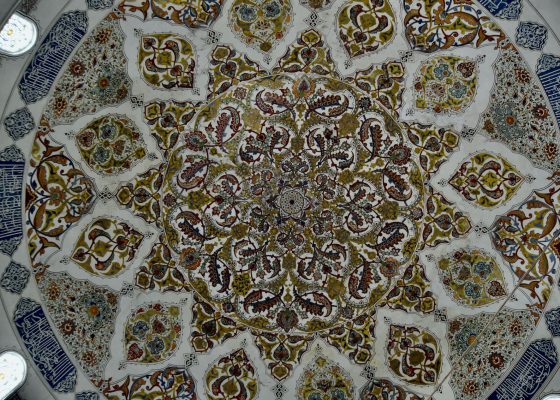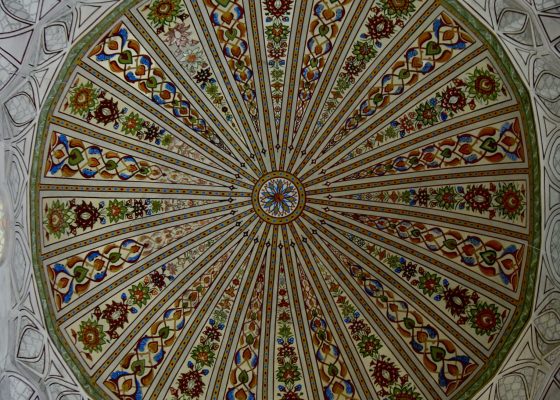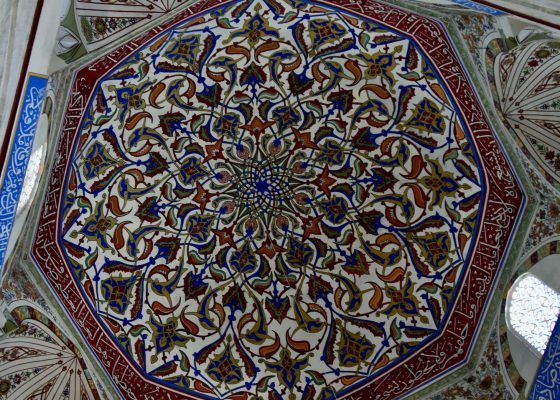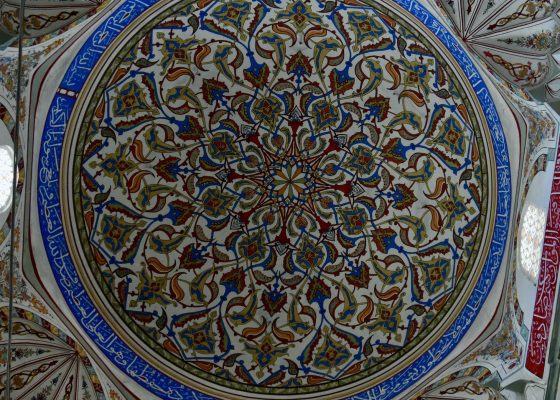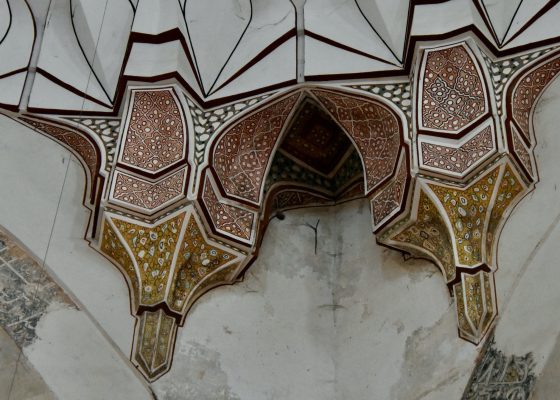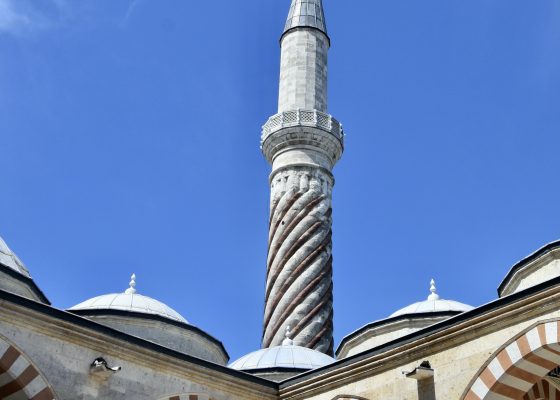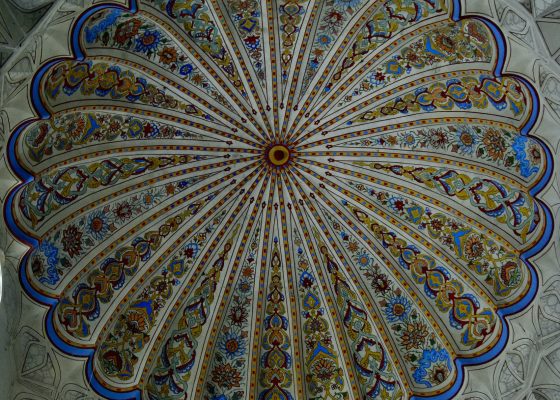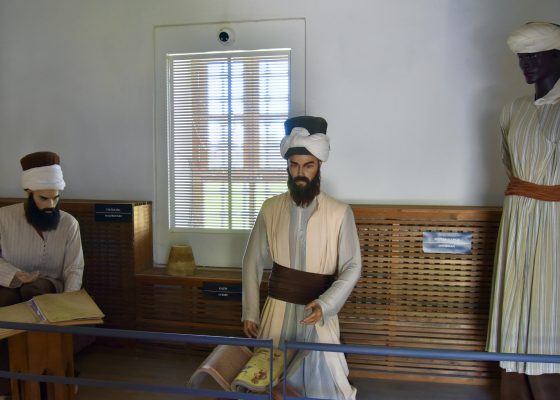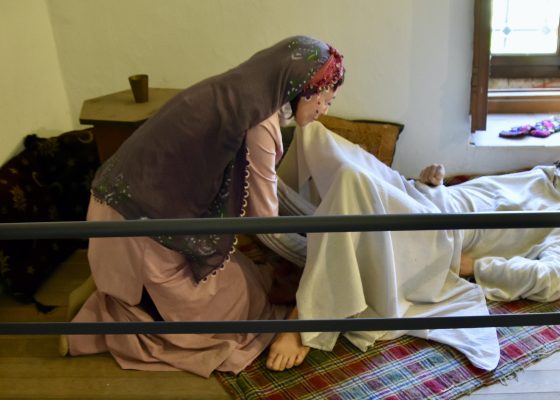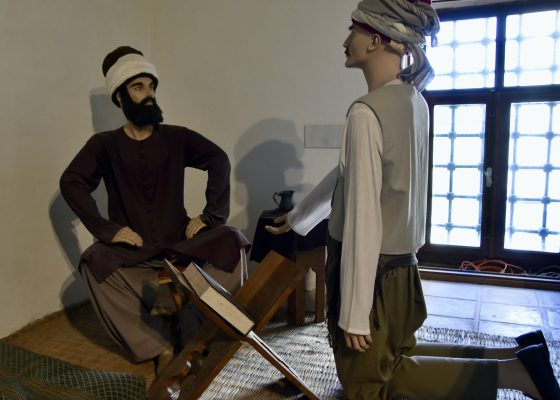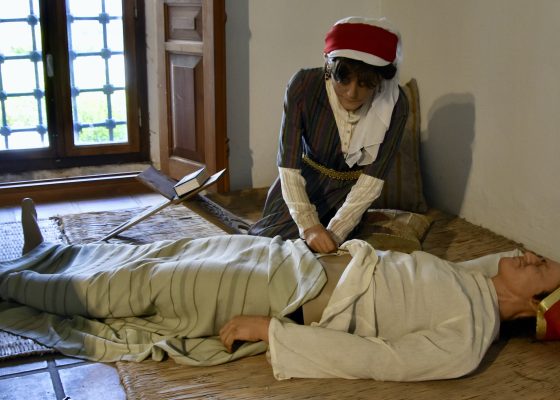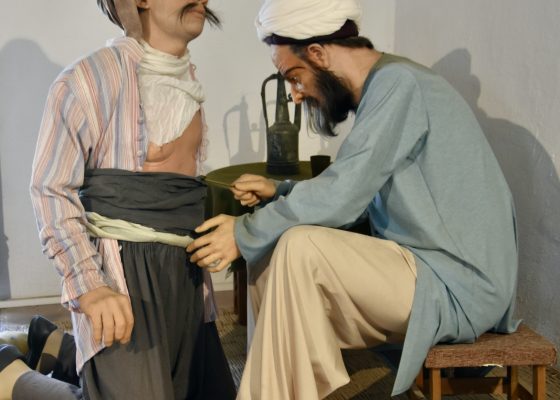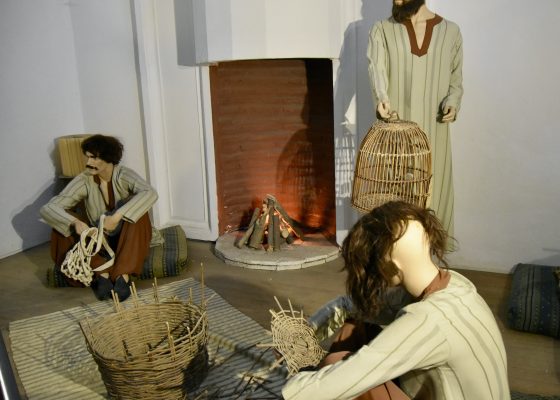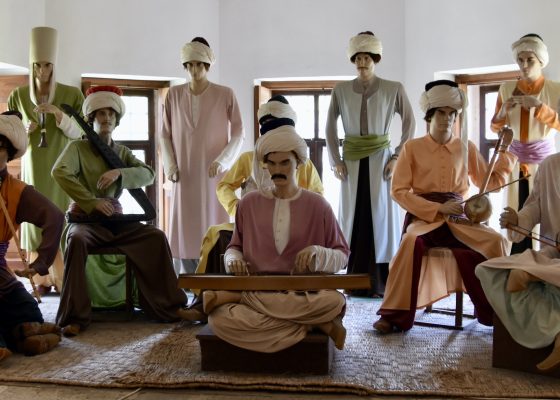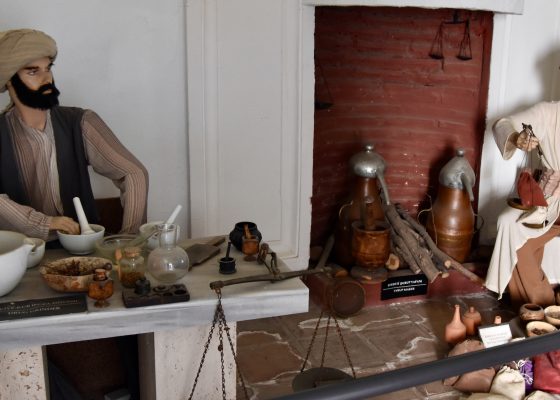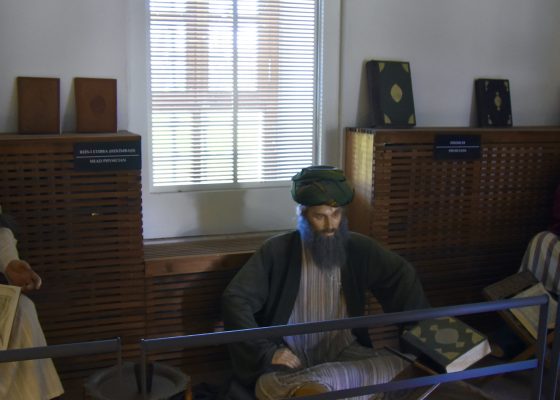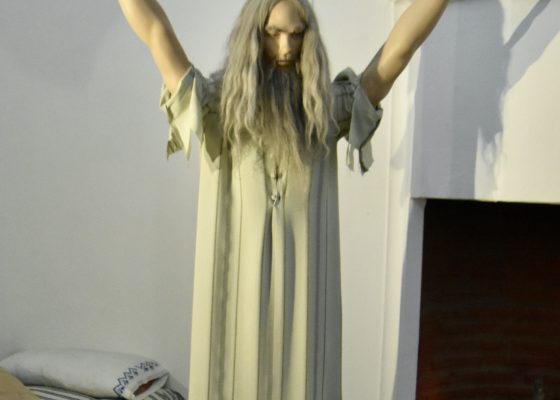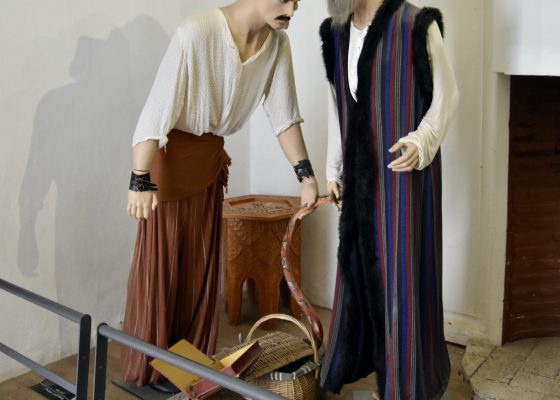Edirne – Turkiye’s European City
This is the first post in which I am referring to what was formally Turkey as the newly designated official name Turkiye which is pronounced Tur-key-yay making it a three syllable word from the former two. This was another of the many changes brought about by President Erdogan and for once, I’m not going to criticize this one, but neither am I going to go back and change the spelling in the many previous posts from this fascinating country. So let’s get on with today’s topic, the city of Edirne. This is a city I have long wished to visit as it is somewhat of an anomaly. While Istanbul strides two continents and is truly an international city, Edirne is the largest and most historic city that sits entirely within the borders of European Turkiye. I wanted to see whether it was more influenced by its European neighbours or was more like an Islamic outpost on the wrong side of the Bosphorus. So let’s find out as we continue the Adventures Abroad Via Egnatia tour with Victor Romagnoli.
History of Edirne
The current site of the city of Edirne has gone through at least four separate incarnations, starting out as Orestias, a Greek settlement supposedly founded by Orestes, the son of King Agamemnon, which would put its foundations on the same timeline as the Trojan War. In other words, really, really old. It later became the city of Odrysa which was part of the Odrysian kingdom, a Thracian forerunner to the Macedonian empire put together by Philip and made even more famous by his son Alexander. We will be seeing and hearing a lot more about them when we cross over to Greece later on this tour.
Then came the Romans and emperor Hadrian who renamed the city after himself and for the next thousand years or so it was called Hadrianopolis, more commonly Adrianople. Located at a strategic position straddling the ever changing borders between Greece, Bulgaria and Asia Minor, the place has seen more than its fair share of battles starting with the defeat of co-emperor Licinius by Constantine I in 324. In 378 the Battle of Adrianople saw the Goths stun a Roman army and Emperor Valens killed on the battlefield. A second Battle of Adrianople in 1205 saw a crusader army defeated by the Bulgarians who were regular assailants of the city. However, despite these defeats, the city for the most part remained as part of the eastern Roman Empire right up until its final capture by Sultan Murad I in 1369 who renamed it Edirne which is actually the Turkish pronunciation of Adrian. From 1369 until 1453 when Constantinople was finally taken, Edirne was the capital of the Ottoman Empire. During this time period many of the famous mosques we will visit while in the city were constructed.
The 19th and 20th centuries saw renewed bloodshed in Edirne as it was fought over repeatedly during a series of Balkan wars in which the city was occupied by Russians, Bulgarians, Greeks and finally in 1922 under the Treaty of Lausaunne ceded to Turkiye where it has remained in relative peace for the last century.
We drove to Edirne after completing our transit of the Bosphorus in the morning. Even though we weren’t leaving from the centre of the city, it still seemed to be hours before we were finally in the rolling countryside. The drive was about three hours in total on the usual excellent Turkish highways. As we entered the city we passed by this statue of a woman picking grapes. Many Turkish cities have statues like this depicting something the city is famous for; in Edirne’s case it’s wine grapes.
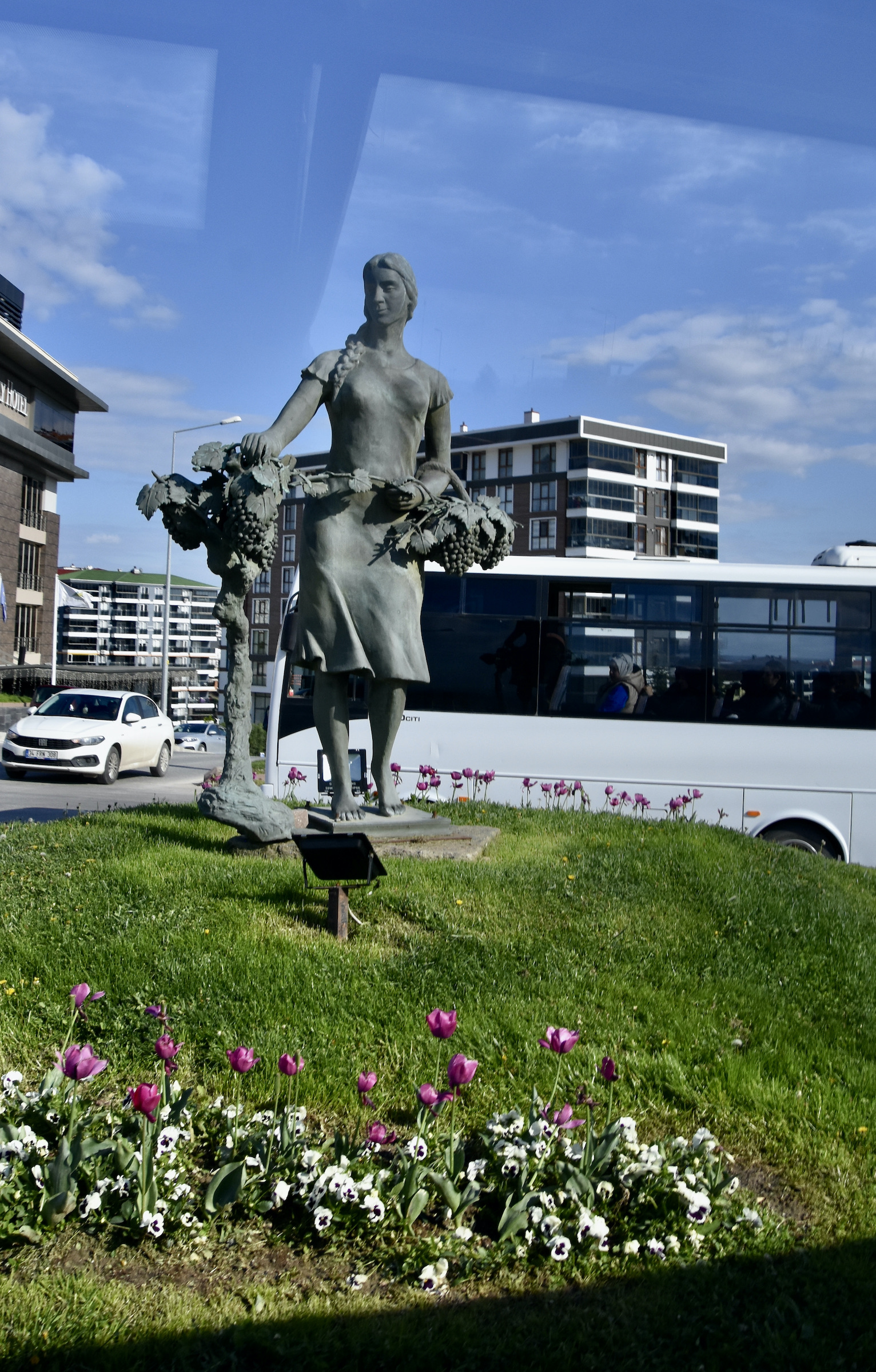
The Plaza Hotel
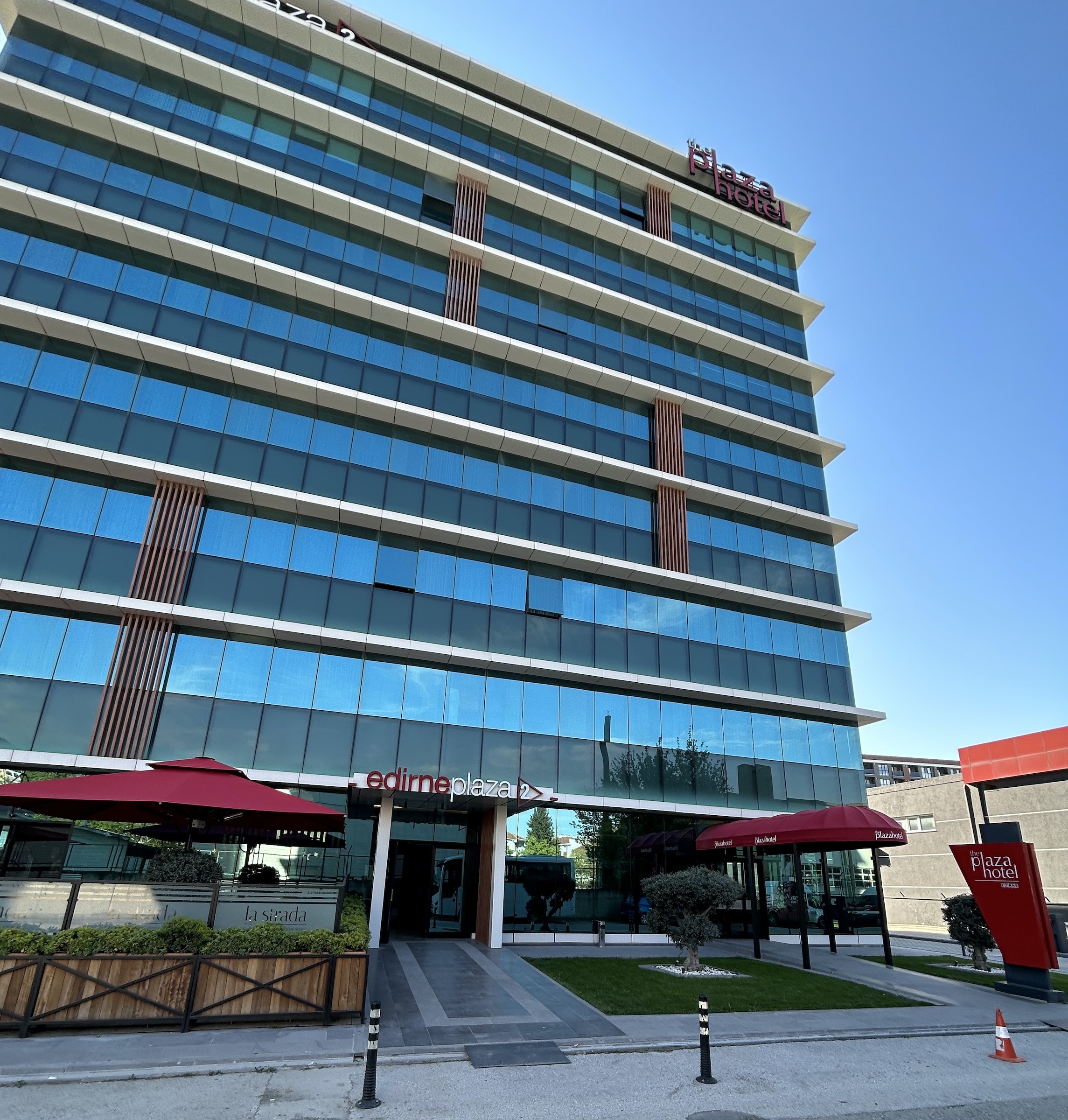
Our home for the next two nights was the Plaza Hotel, an ultramodern hotel right across from the huge Erasta Edirne shopping mall. What I was to come to realize over the next two days is that Edirne is a shopping destination for Bulgarians and Greeks as the runaway devaluation of the Turkish lira has made the prices here almost laughably low compared to those in the EU. There were Greek, Bulgarian, Romanian, North Macedonian and even Albanian license plates everywhere in the city.
Aside from very comfortable rooms the Plaza has a great breakfast buffet which is something I’ve come to expect from Turkish hotels. People who come from Europe to North America must be appalled at what passes for a breakfast buffet in most hotels in Canada and the United States.
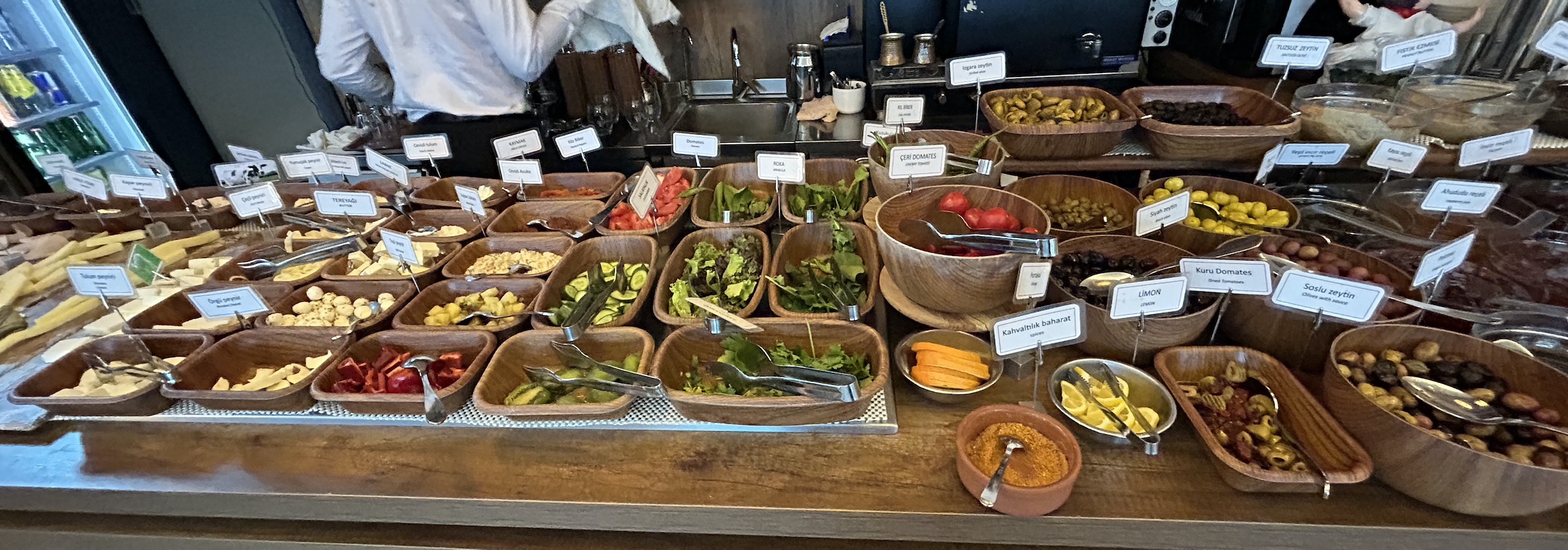
After breakfast the next morning our driver took us the short distance to the centre of Edirne and with our local guide Cigdem along with Victor we began our day exploring the many sights of Edirne.
Mosque of Selimiye
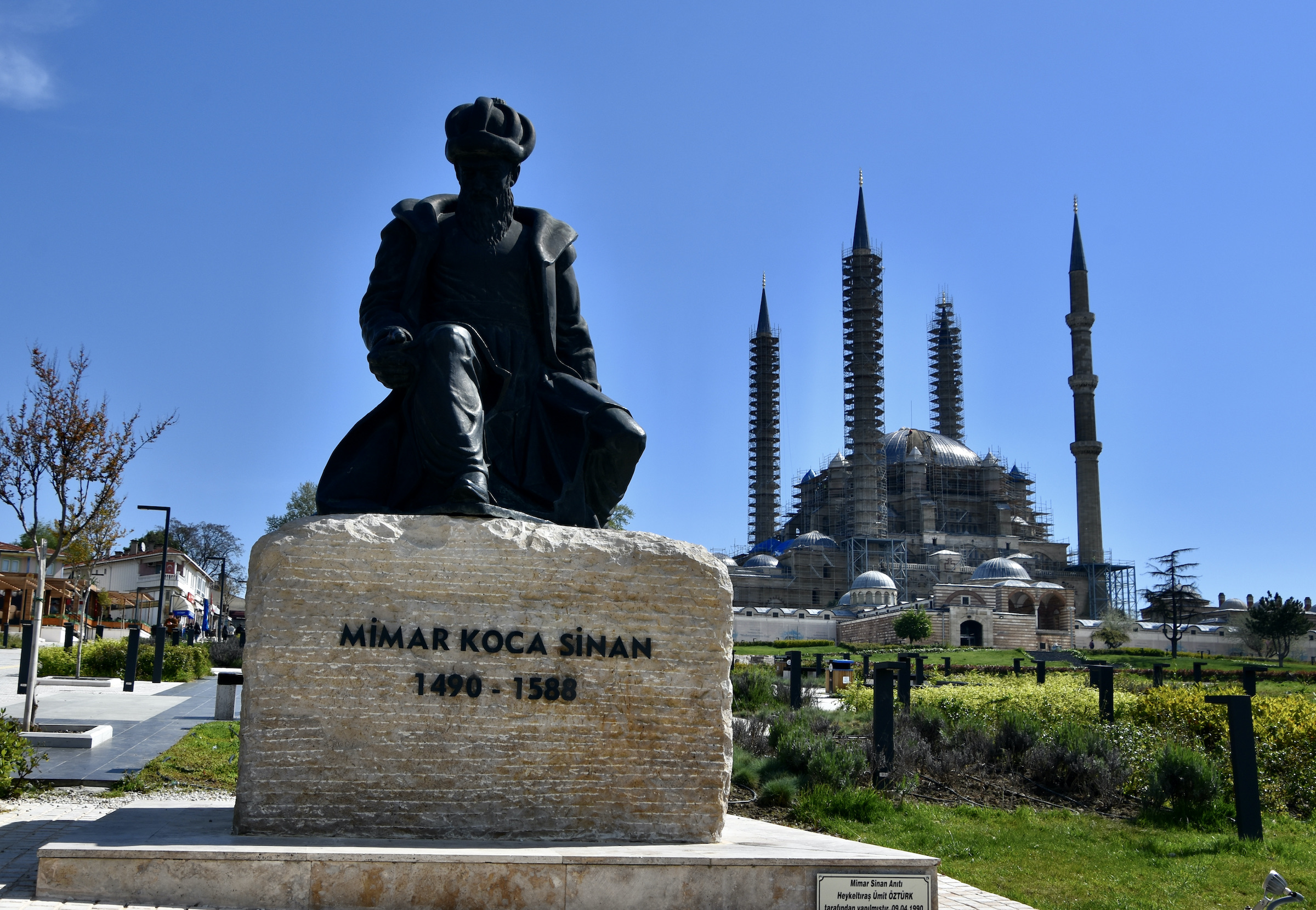
Our first stop this morning is a UNESCO World Heritage Site with this description when it was inscripted in 2011.
The square Mosque with its single great dome and four slender minarets, dominates the skyline of the former Ottoman capital of Edirne. Sinan, the most famous of Ottoman architects in the 16th century, considered the complex, which includes madrasas (Islamic schools), a covered market, clock house, outer courtyard and library, to be his best work. The interior decoration using Iznik tiles from the peak period of their production testifies to an art form that remains unsurpassed in this material. The complex is considered to be the most harmonious expression ever achieved of the Ottoman külliye, a group of buildings constructed around a mosque and managed as a single institution.
We are already familiar with the work of Sinan when we visited the Mosque of Suleiman and the Rustem Pasha Mosque on the second day of our stay in Istanbul. Here we see his statue before the mosque that was commissioned by Selim II, a son of Suleiman the Magnificent who also had the unfortunate if accurate sobriquet, Selim the Drunk. It was constructed between 1568 and 1575 and as one can see is currently undergoing a multi-year restoration that began in 2021 and won’t be complete until 2025. That’s not surprising since it was looted by Russian troops in 1877, shelled by artillery in 1913 and once again looted by Bulgarian troops shortly thereafter.
As we draw closer we can see one of the incredibly tall and thin minarets that is not covered in scaffolding. Before the widespread use of broadcasting equipment, the muezzin would need to climb to the top level five times a day to give the call to prayer.
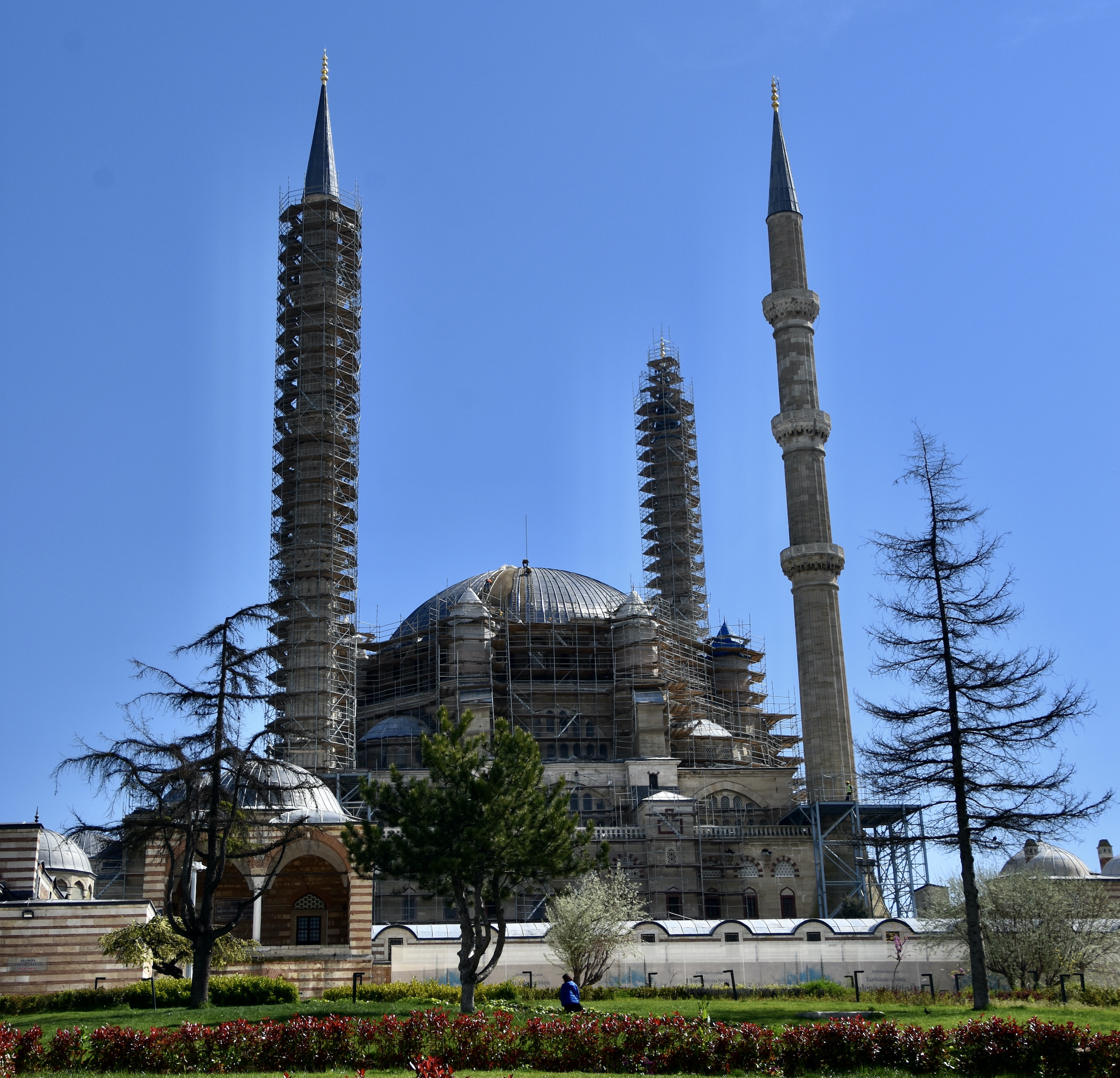
The interior of the Selimiye mosque is also largely under scaffolding so we don’t get a good view of the massive dome which Sinan made slightly larger than the one at Hagia Sophia to demonstrate that he could match the engineering feats of the Romans some thousand years earlier. But there are some interesting things to see such as the delicate stonework of the minbar or stairway to heaven.

And this exquisite Iznik tile decoration.
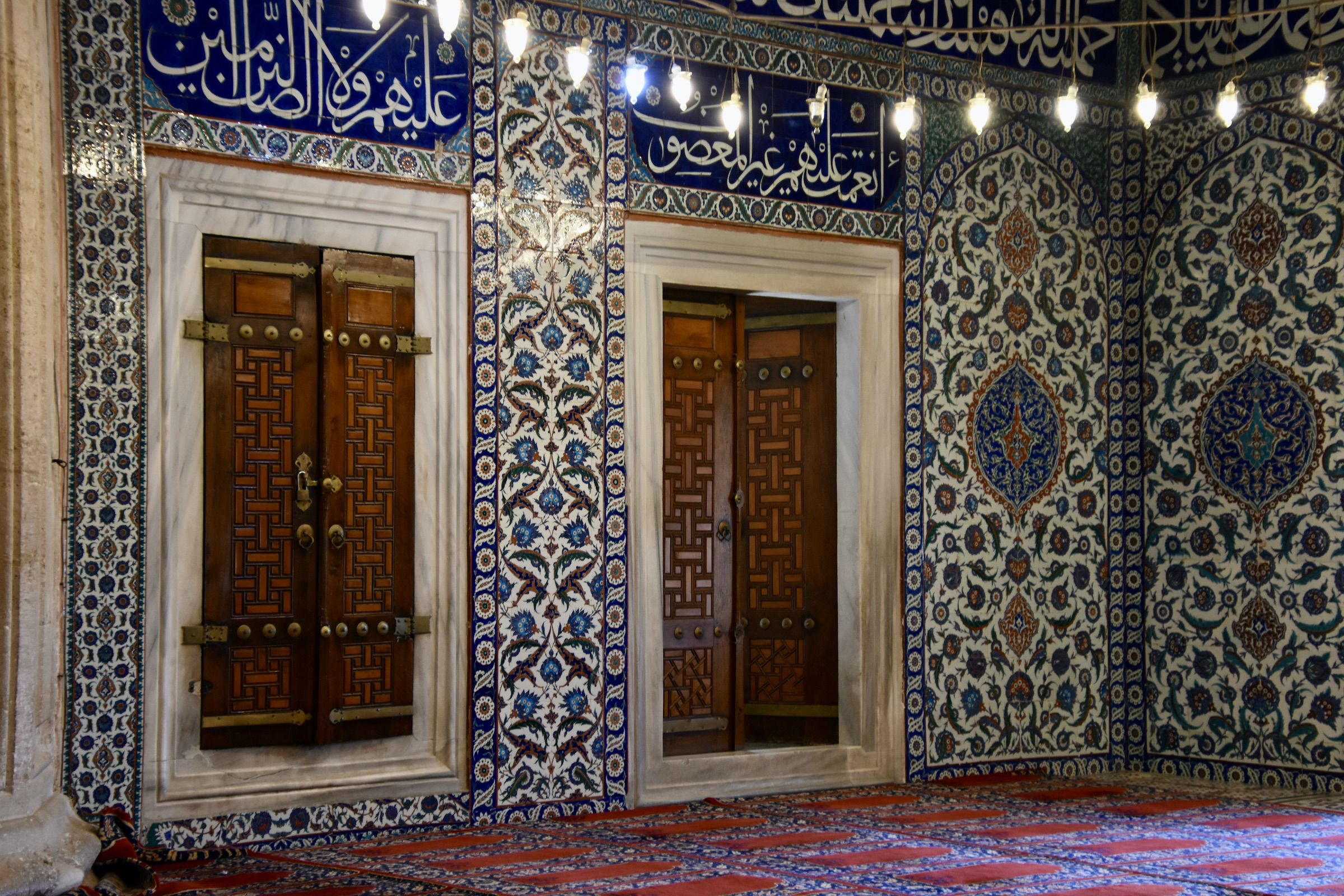
As noted in the UNESCO description it is not just the mosque that is important, but the surrounding buildings that make up the entire complex. One of these is the market that you actually need to pass through to enter the mosque. It was just getting underway when we visited it. Turkiye has many textile factories making brand name clothes and what was on sale here appeared to be the genuine items and not cheap knock offs. If I thought the prices at the shopping mall were low, the prices here were rock bottom. For example, you could buy three pairs of top quality socks for $1 USD, which Victor did.
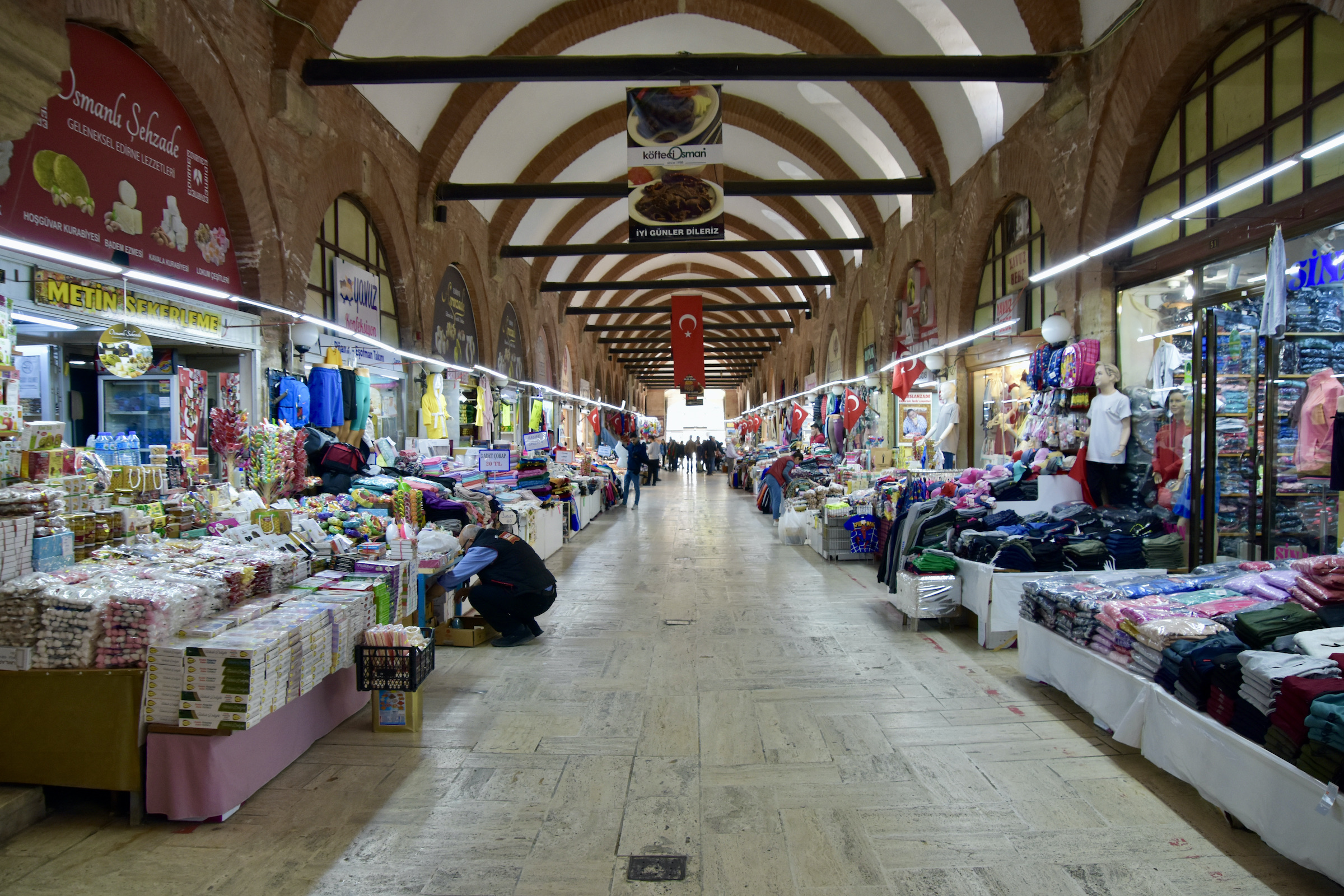
Another Edirne specialty is soap in the shape of colourful fruit which makes a nice gift to bring home for those who couldn’t make it on this tour. The most expensive items here were 200 Turkish lira which is all of $7.50 USD.
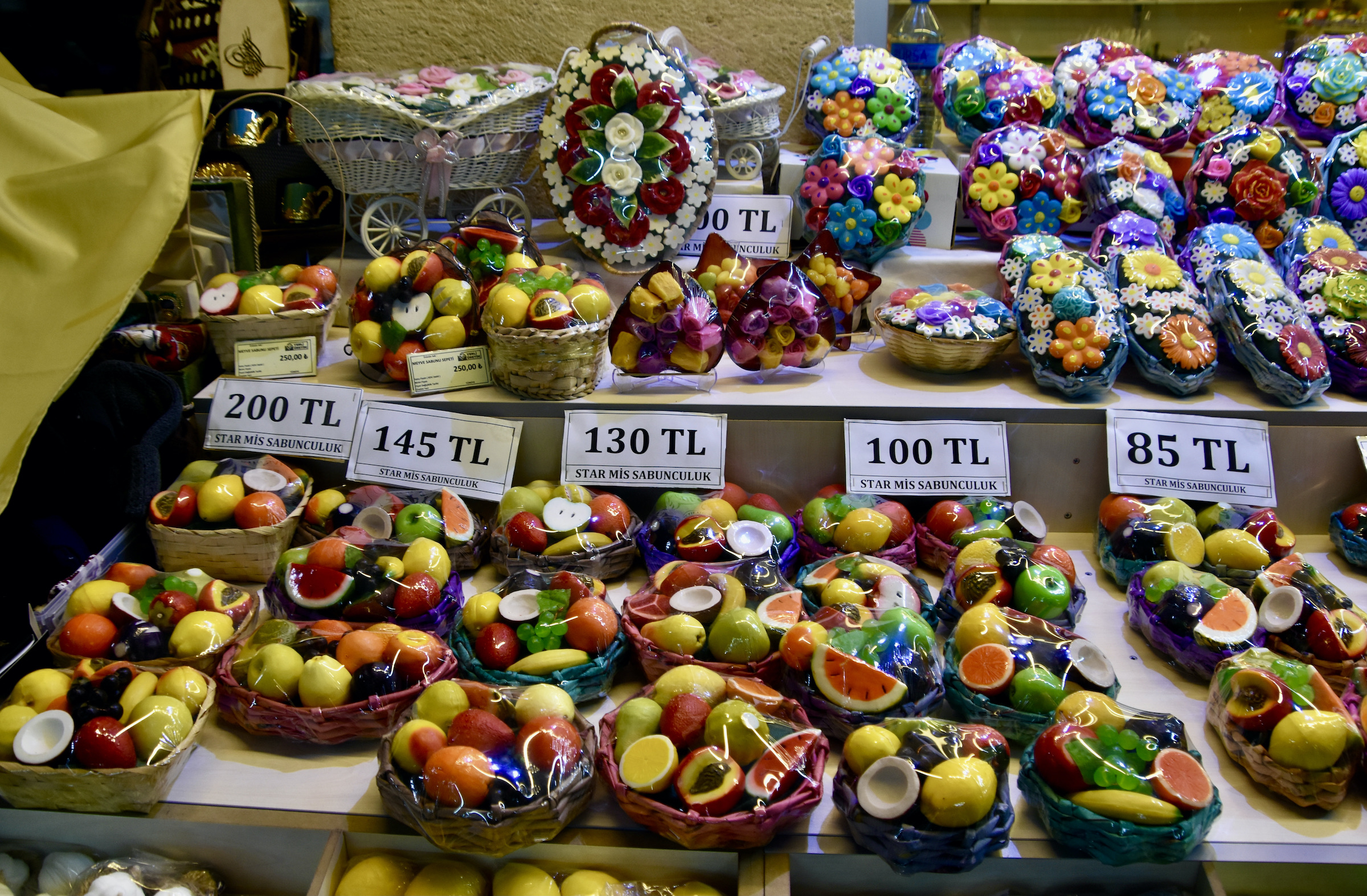
Back outside standing on the steps leading to the mosque complex we had a good view of the centre of Edirne looking across the unexcavated remains of the Roman forum. That’s the ‘old mosque’ on the left which we will visit next.
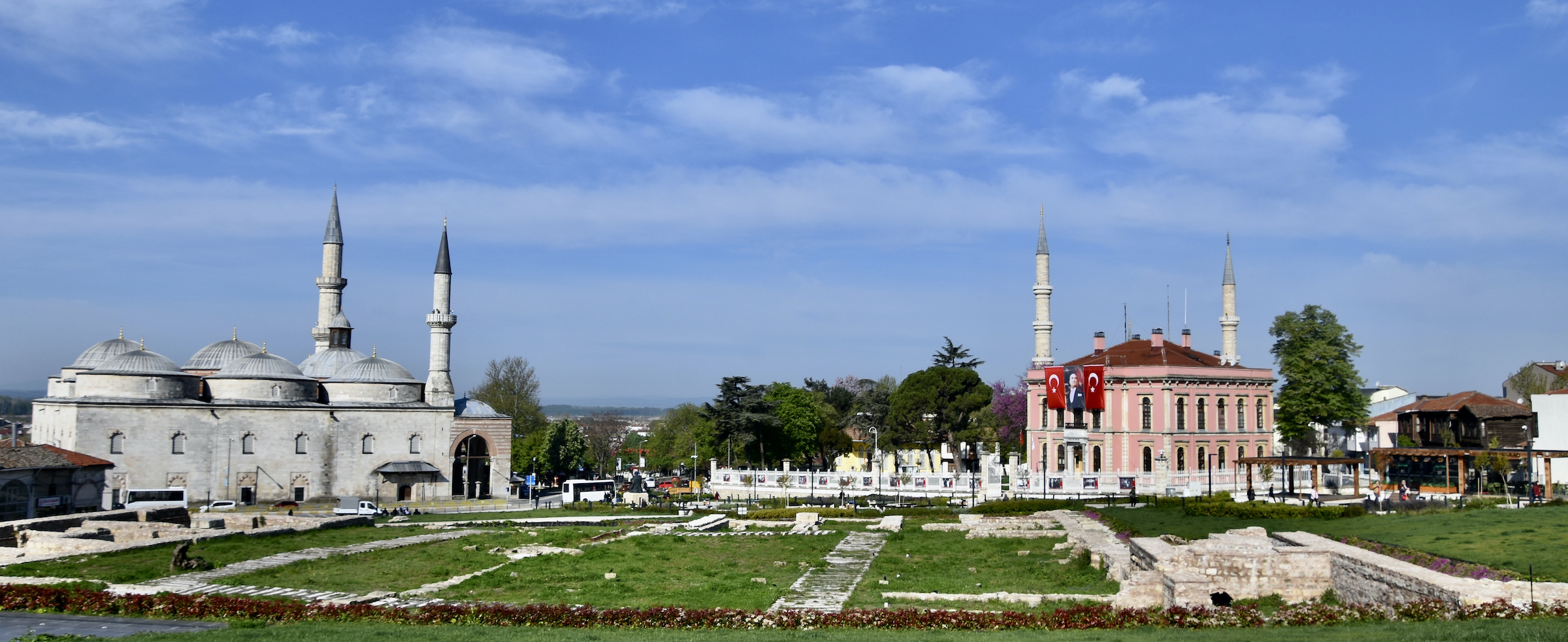
Eski Mosque, Edirne
The Eski or Old Mosque was the first to be constructed in Edirne after the city was captured by the Ottomans. Built between 1403 and 1414 it has a completely different exterior look to that of the Selimiye Mosque with its giant dome. Instead Eski Mosque has nine small ones. It is what is inside this mosque that makes it a must-visit in Edirne. The interior, with its interchanging orange and sandstone blocks, immediately brings to mind the some of the great mosques of Spain, especially the one in Cordoba.

This is a place where you can revel in the details, especially of the domes and the calligraphy. Here is a small gallery of images from the interior of Eski Mosque which more than made up for what we couldn’t see at the Selimiye Mosque. Click on each photo to get a thumbnail and then once more to get the large photo.
- Colour and Design
- Dome 2
- Dome 3
- Dome 4
- Giant Calligraphy
- Intricate Calligraphy
- Two Types of Calligraphy
- Window
Exiting the Eski Mosque, Cigdem now led us on a walking tour of Edirne through a number of pedestrianized streets which was quite fascinating. This fellow is selling macunu, a Turkish confectionary that comes in a number of flavours and colours that are wrapped around a small stick and licked like a lollipop.
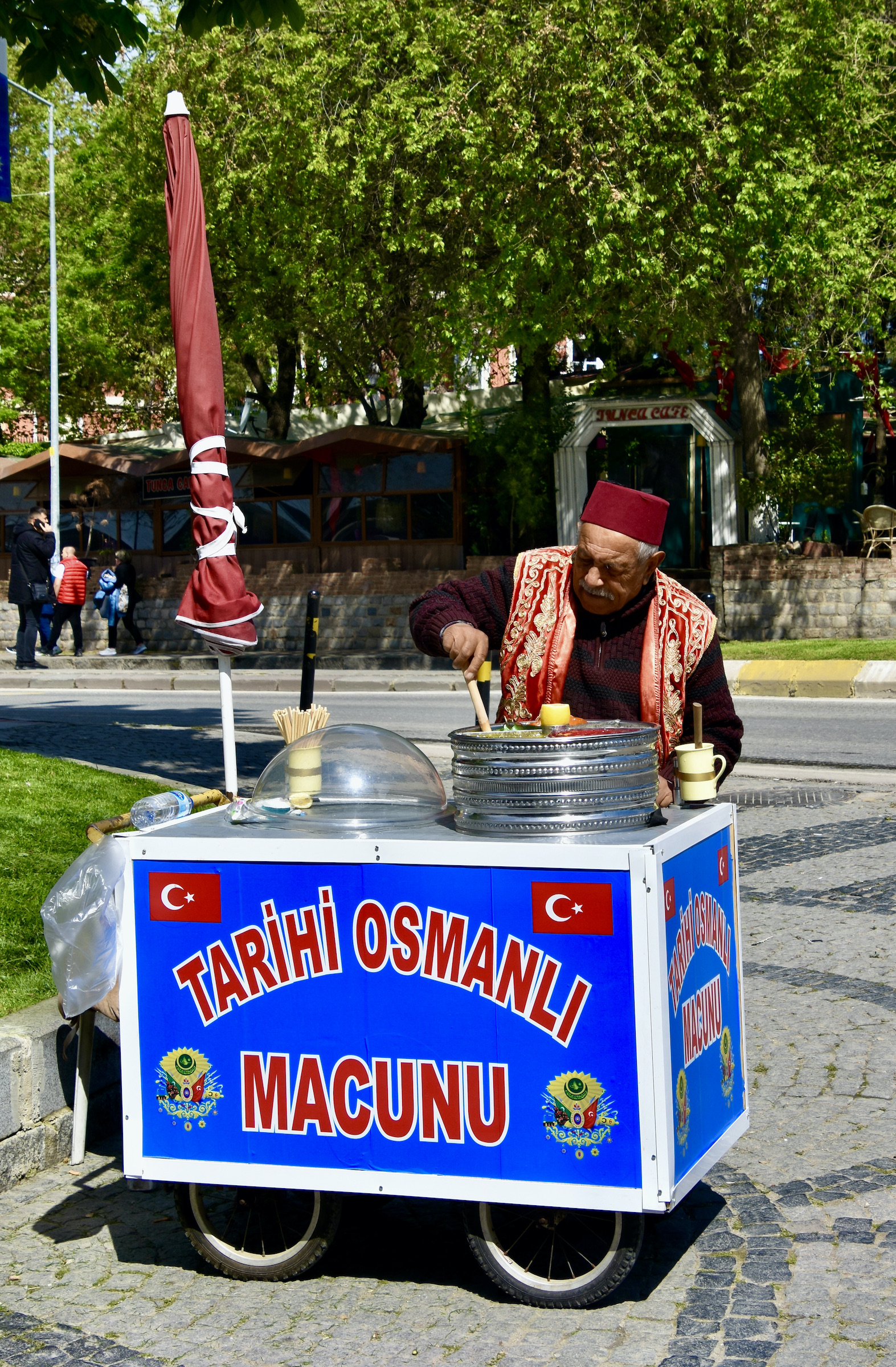
If giving your kid some macunu didn’t do the trick you could buy him a balloon of his choosing or maybe some cotton candy.
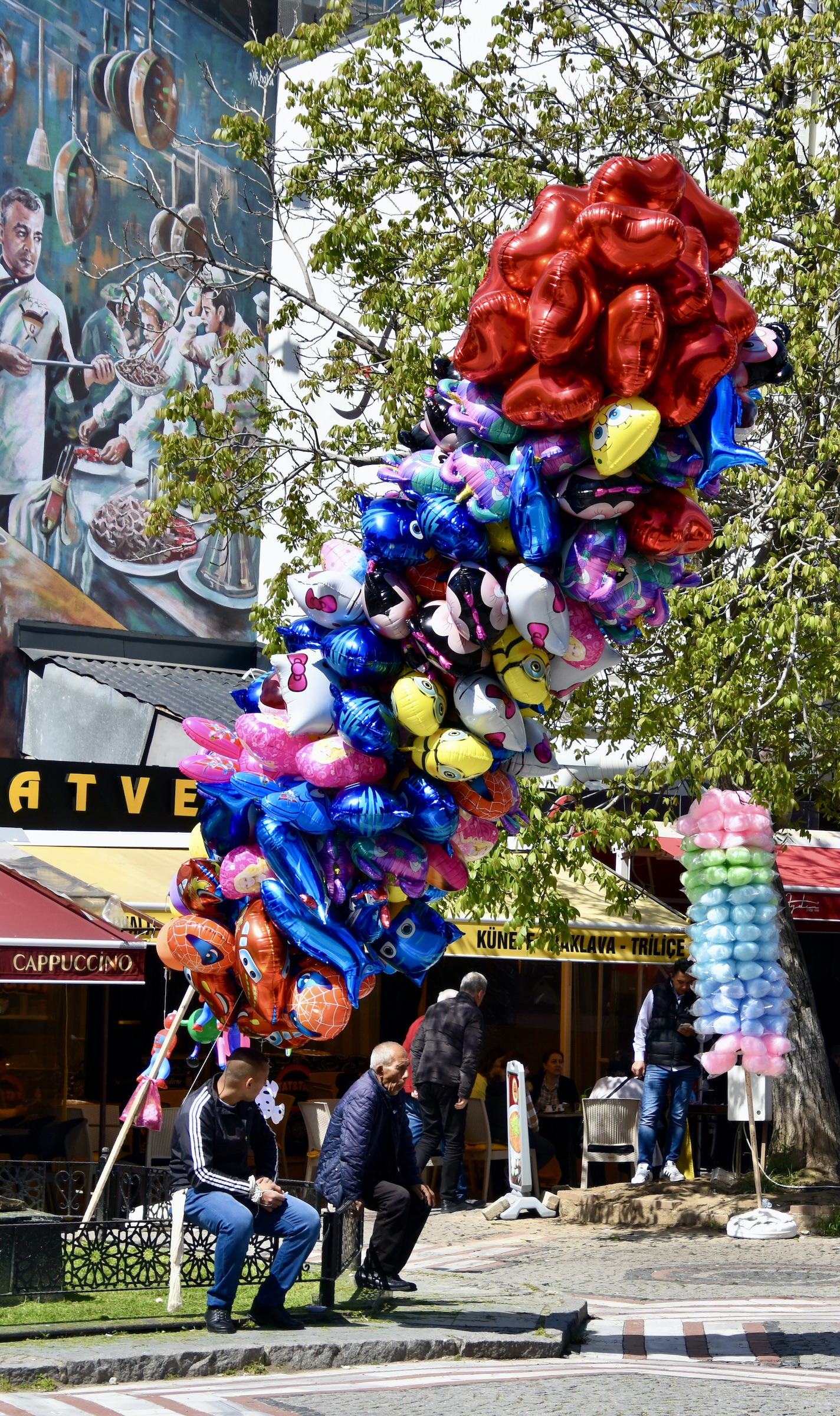
Or how about some strawberries? The green fruits are mistakenly called unripe plums by many tourists, but are actually greengages which are a member of the plum family, just not plums. The Turks love to eat them when they are unripe as they have a sour taste that makes sucking on lemons seem like eating sugar. They will definitely have your lips puckered and your eyes watering.
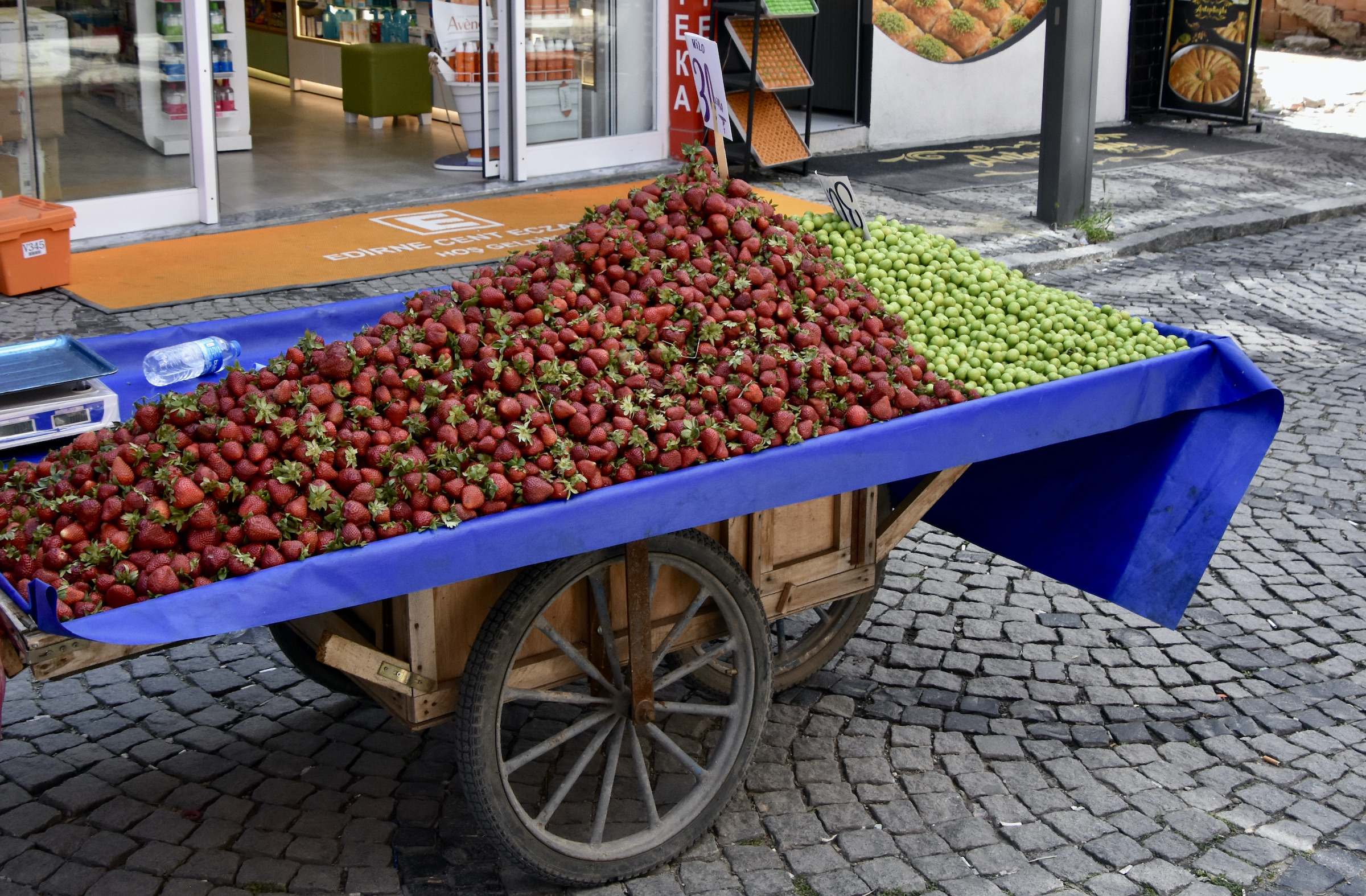
The citizens of Edirne certainly seemed to be very relaxed and enjoying the morning sunshine. I sat down with Sinan and contemplated that life could finally be lived here in peace and tranquility after thousands of years of conflict. I pray it stays that way, but with what is going on in Ukraine, not that far away, who knows? Carpe diem.
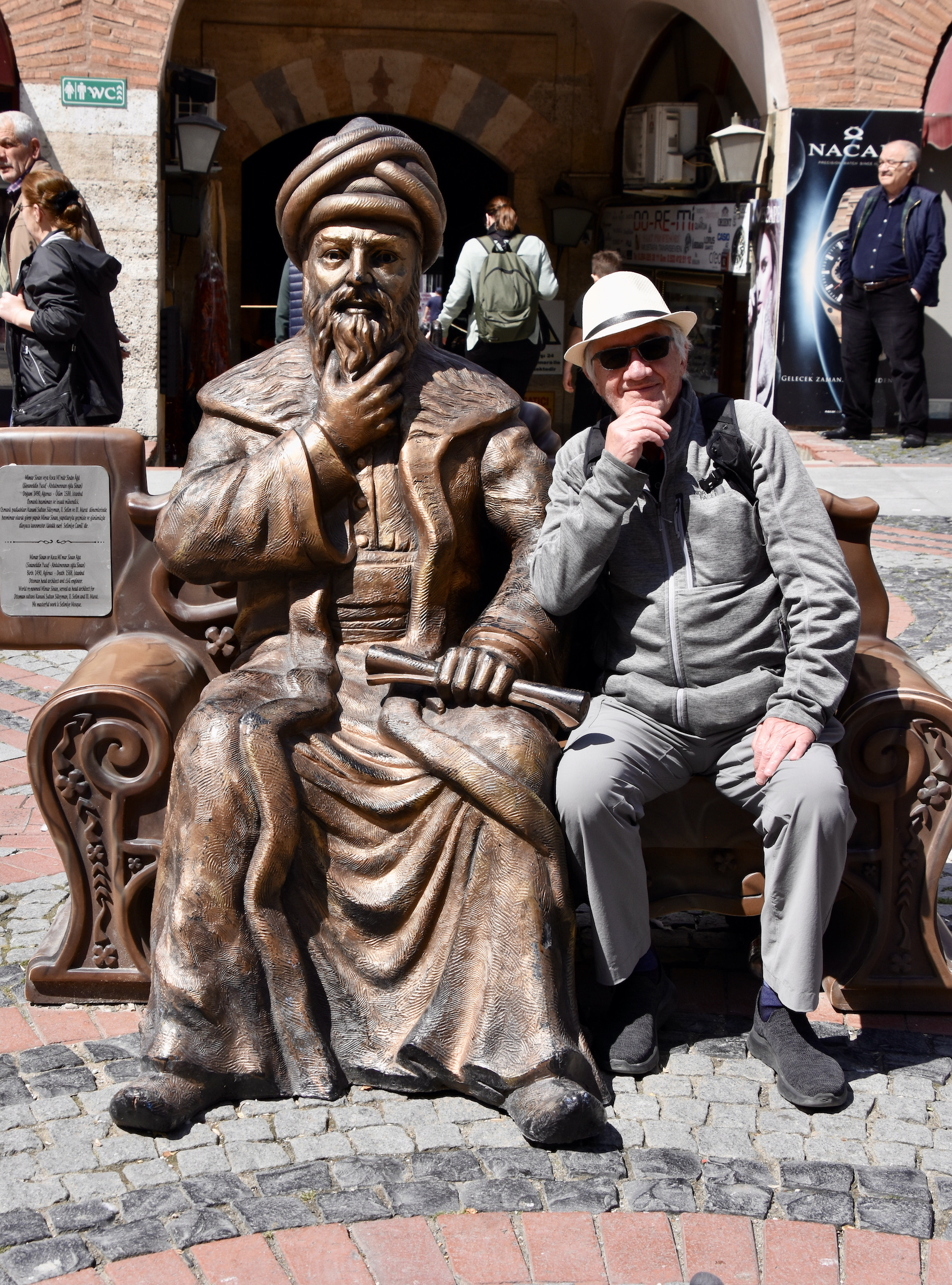
Another activity closely related to Edirne is wrestling, real wrestling, not the fake WWE stuff. Here it is called kirkpinar and involves getting oiled up before a match and going at it stripped to the waist. Since 1360 Edirne has been the host to an annual kirkpinar contest that is now recognized as a UNESCO Intangible Cultural Heritage unique to this part of Turkiye.
This fountain commemorates a kirkpinar contest which involves a number of individuals in what appears to be a serious free-for-all.
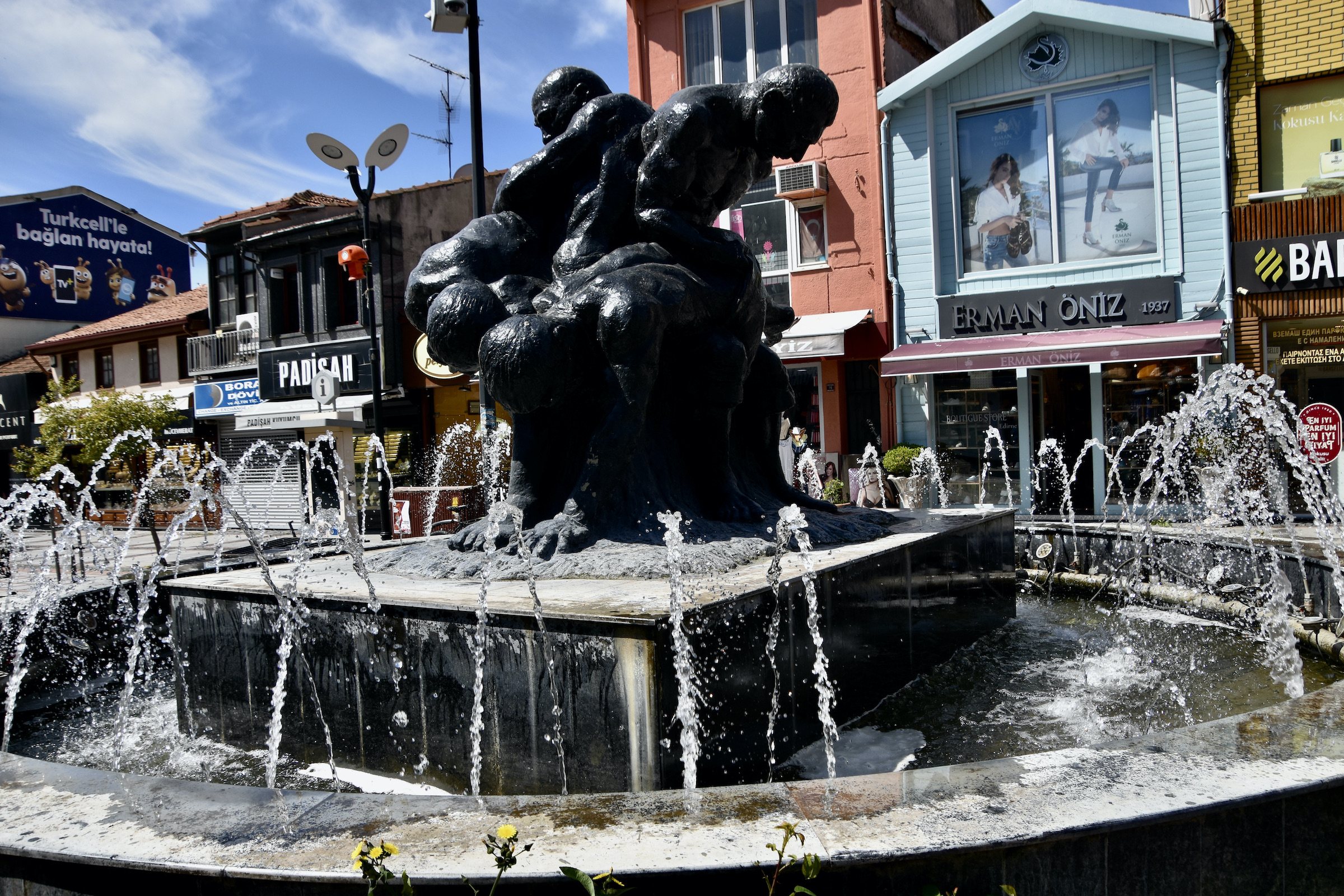
As offbeat as kirkpinar may seem, nothing topped the weirdness chart more than this little fellow, who could give you nightmares just looking at his eyes. Who or what this was supposed to be I have no idea and neither did Cigdem.
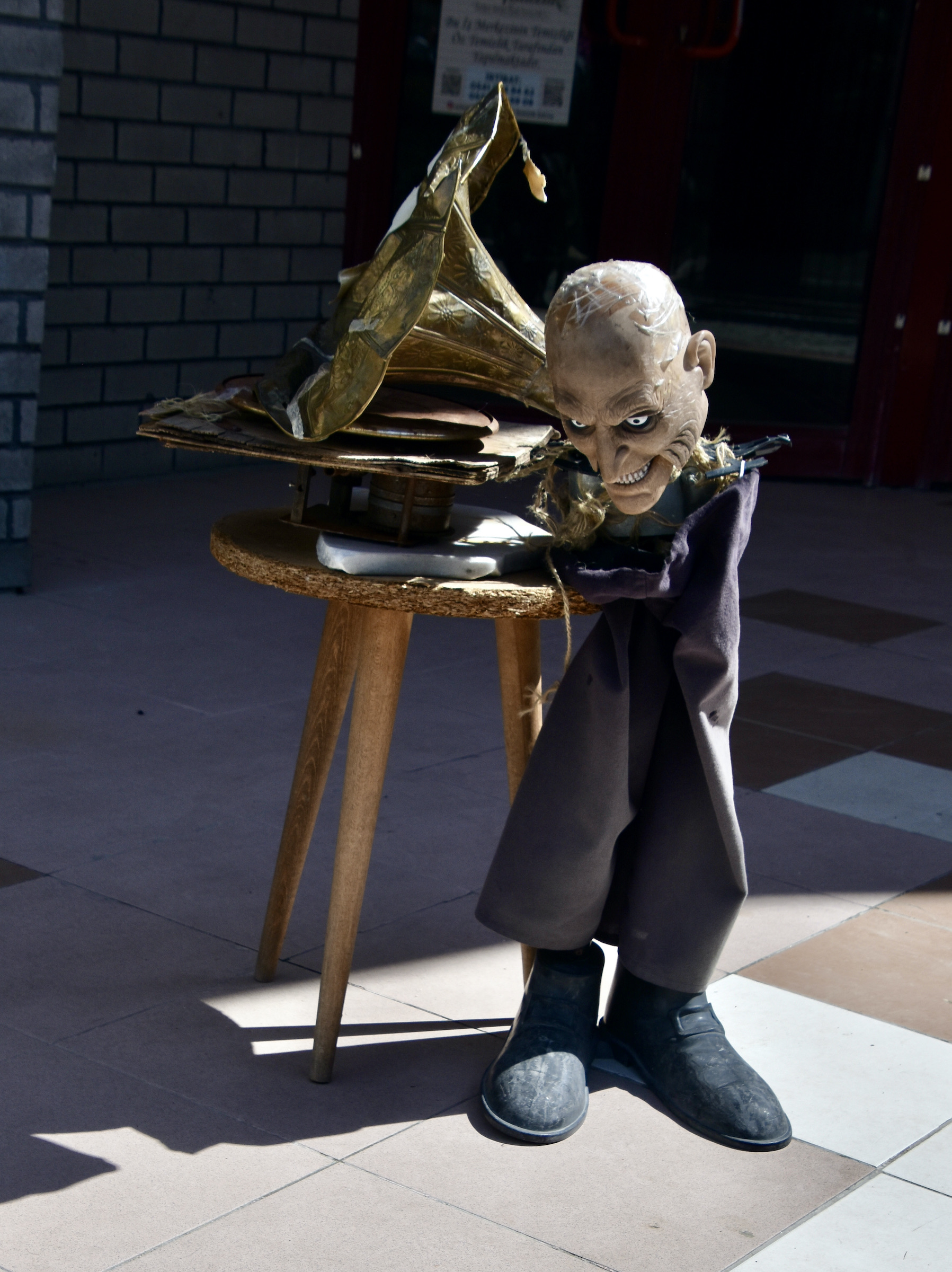
We now approached our third mosque of the day.
The Mosque of Three Balconies
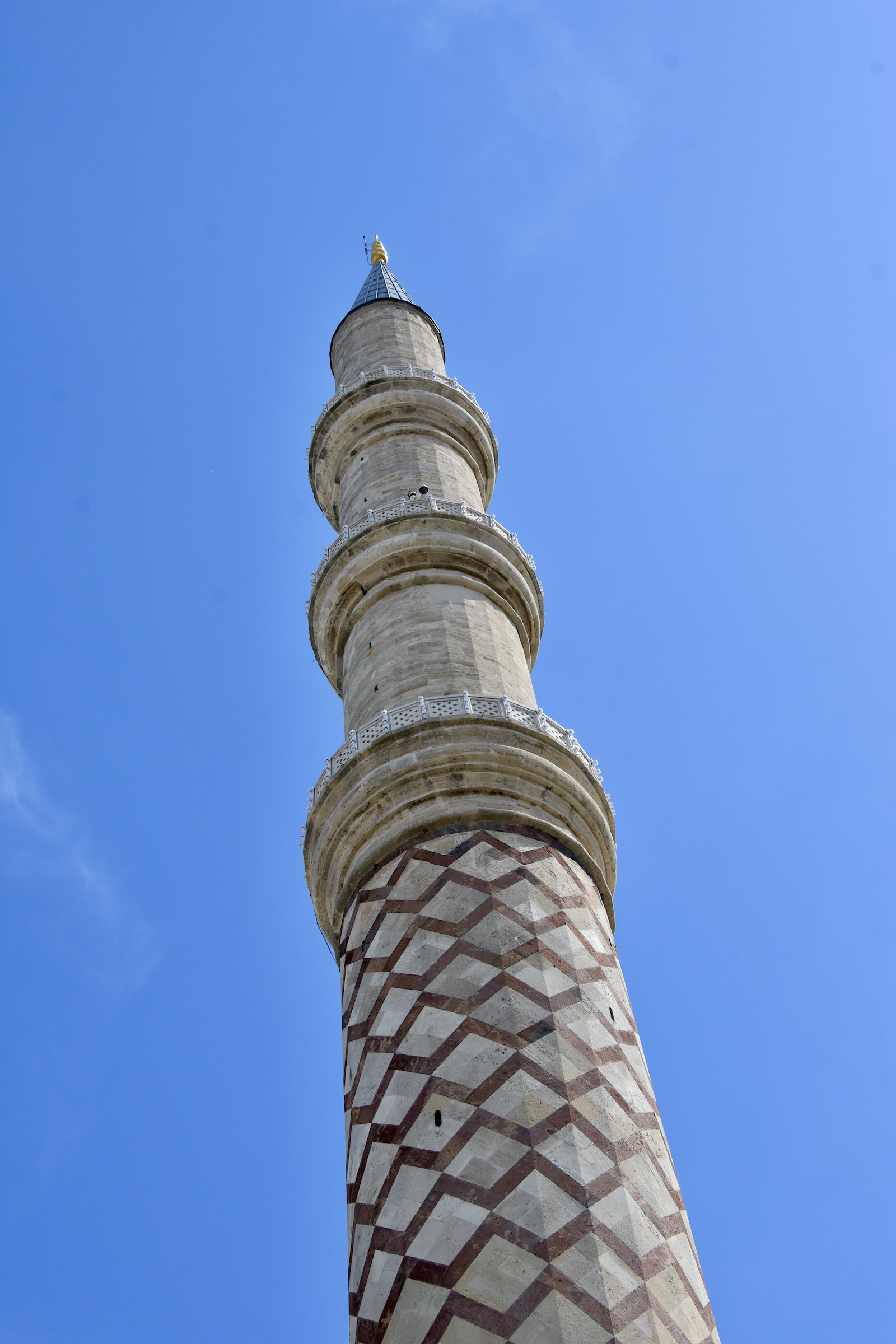
This mosque, properly Üç Serefeli, gets its common name from the three round balconies on the minaret shown above. It was built on the orders of Murad II, generally considered to be one of the more successful Ottoman sultans. Constructed between 1438 and 1477 it had at the time, the largest dome in the Ottoman Empire.

This mosque is impressive on both the outside and the inside. Most notably the five smaller domes and the spiral minaret. Check them out in this gallery.
- Dome 1
- Dome 2
- Dome 3
- Dome 5
- Interior Detail
- Spiral Minaret
- Dome 4
We now concluded our walking tour of the historic centre of Edirne and headed outside the city. We had a quick stop at the exterior of the newly restored Grand Synagogue. Built after a 1905 fire destroyed the existing synagogues in this city with a Jewish community then of over 20,000 it was at the time the third largest in Europe. By 1983, almost the entire community had emigrated to Israel, elsewhere in Europe or North America and it was abandoned. In 2015 it was restored by the Turkish government in perhaps an act of atonement for how poorly the Jews had been treated by their Muslim neighbours over the centuries. While the synagogue has come back to life, the Jewish community has not.
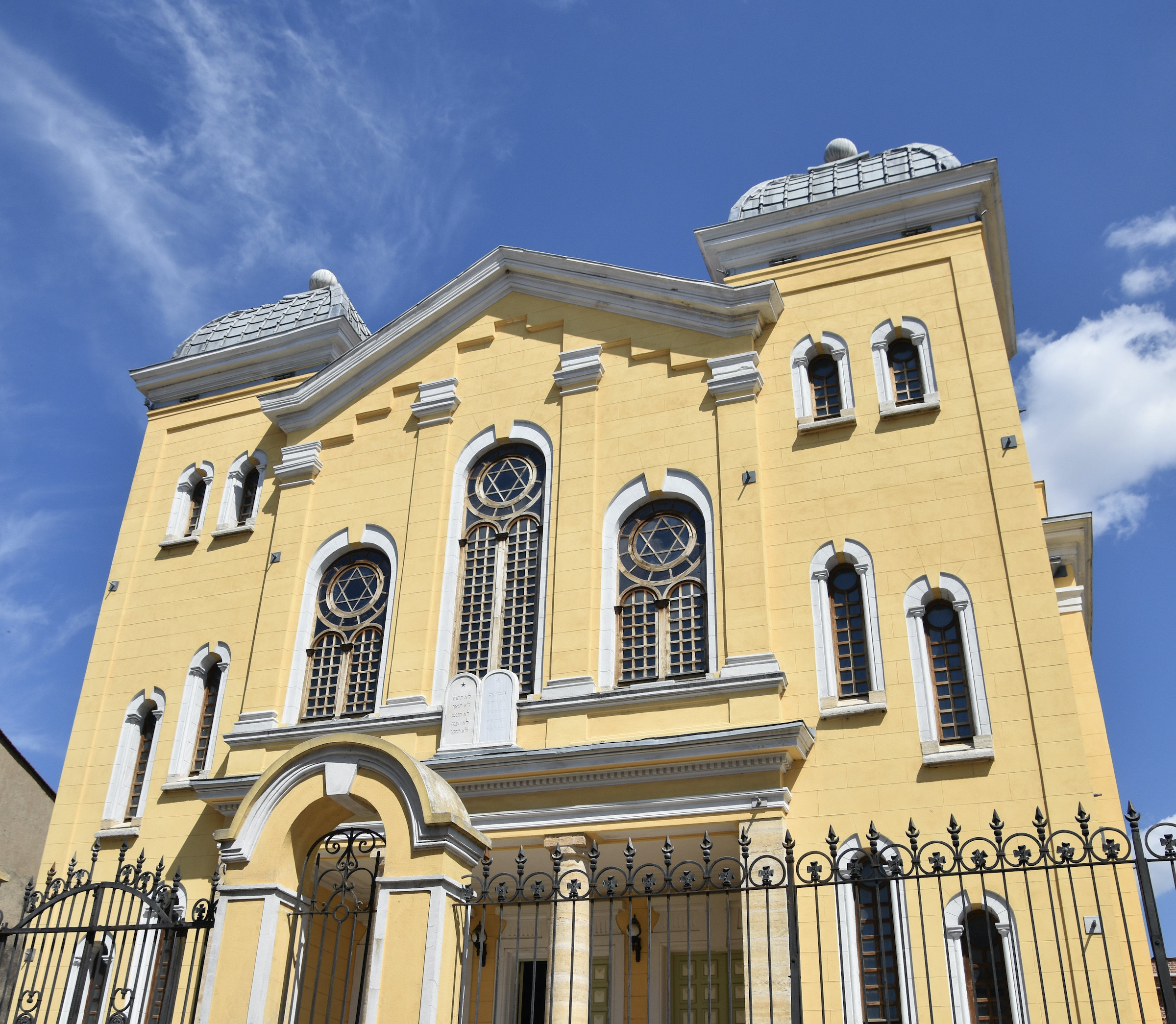
Bayezid II Complex
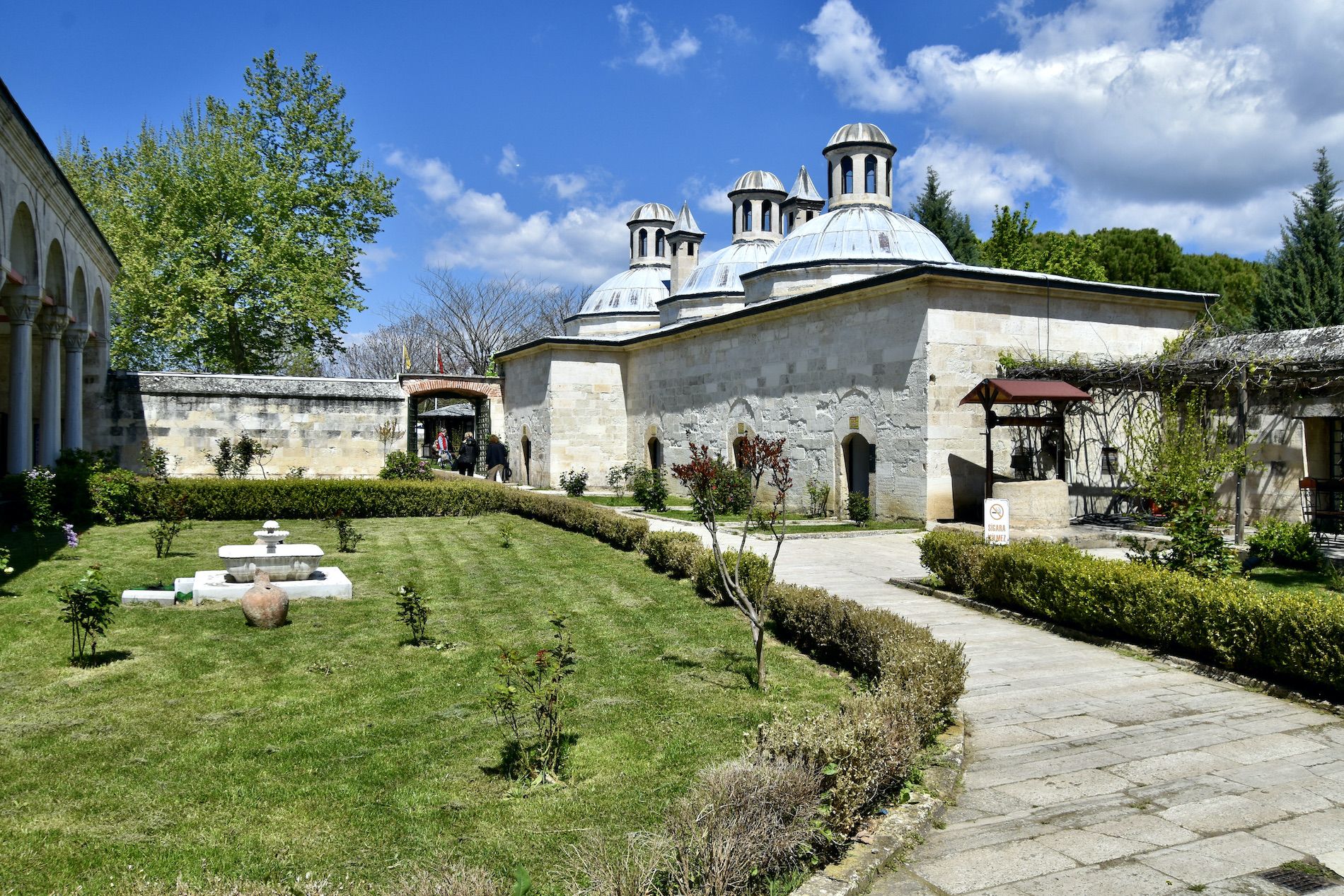
Our final stop of the day was at a külliye on the outskirts of Edirne. A külliye is a complex of buildings centred around a mosque, much as we saw at the Selimiye Mosque. Usually there is a madrasa or school, a kitchen and a laundry, but this particular set of buildings has something quite different – a health complex that once doubled as a medical school and a treatment centre, particularly for psychiatric patients. It was constructed during the reign of Bayezid II who is considered to be another of the great Ottoman sultans. He was the one who evacuated the Jews from Spain after their expulsion and resettled them in Ottoman territory. Kind of ironic considering the last place we visited.
Anyway, Bayezid II had a great interest in medicine and its practice so had this complex built in 1488 and it remained in operation until the Russo-Turkish War of 1877-78 when the Russians occupied the city. In 1997 it reopened as a museum and is now on the list to become a UNESCO World Heritage Site.
We were free to wander from room to room where lifelike figures demonstrated various medical techniques used at the hospital. I have prepared a gallery of some them. The patients seem quite chipper considering the processes they are about to undergo without anaesthetic.
- Hospital Administration Staff
- Birthing Room
- About to Perform an Eyelid Operation
- Hernia Operation
- Male Breast Reduction Operation
- Psychiatric Patients
- Music Therapy Treatment
- Medicinal Syrup Shop
- Hospital Medical Staff
- Severe Psychiatric Patient
- Theriac Treatment
The doctors believed that music had a calming effect on mental patients and that’s why there was an Ottoman orchestra on the scene. In case you are wondering, theriac treatment involved a mixture of many ingredients designed to be antidotes for poison, especially from snakes. First developed by Mithridates VI in the Kingdom of Pontus thousands of years ago it remained in use until the 18th century when it was realized to be nothing more than quackery.
This is Lady Mary Montagu, a figure that deserves to be much more well known than she is today. I was quite surprised to see her here, but I did know who she was. Considered to be one of the most enlightened women of the time she accompanied her husband to Constantinople where he was British ambassador. During her time there and in Adrianople she witnessed people being inoculated against smallpox, a disease that had killed her brother and disfigured her face (although not in this model).
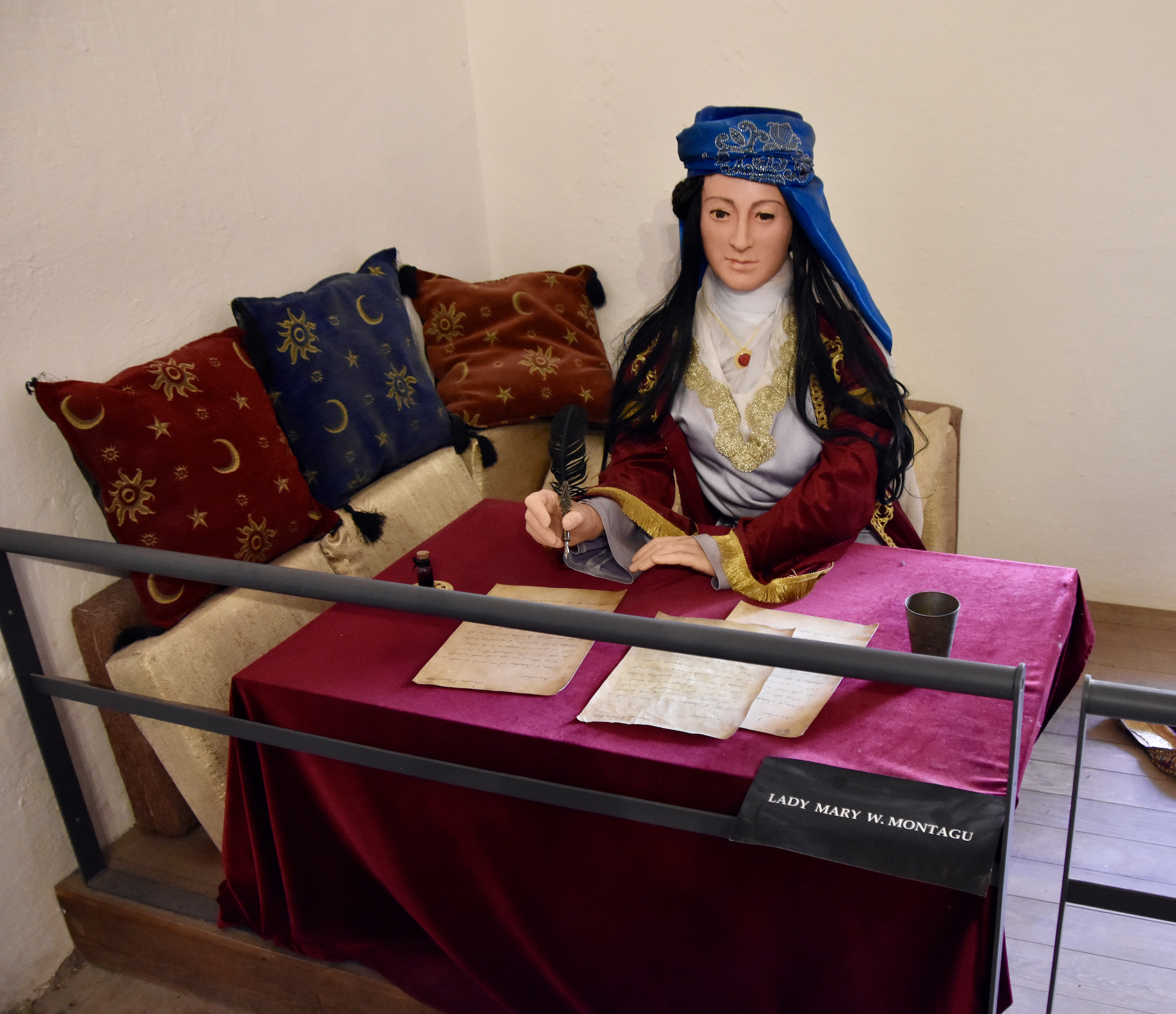
On her return to Britain she began a campaign advocating for the prevention of smallpox by way of inoculation. Having just lived through the anti-vax movement during Covid, one can imagine the obstacles she faced in a world where vaccines were not even a known quantity. Eventually her efforts did succeed as people who did get vaccinated didn’t get smallpox and those that didn’t, did.
As we left the Bayezid II complex we came across this gentle giant that Cigdem identified as a Turkish sheep dog or more properly a Kangal Shepherd dog, a breed recognized by the American Kennel Club only in 2013. They were used for hundreds of years to protect sheep from wolves and are now doing the same in Namibia and Kenya. Only there it is to protect the sheep from cheetahs. The result is that the number of cheetahs killed by African farmers has declined significantly as the Kangals do their job and the cheetahs have to look for more traditional prey, like gazelles.
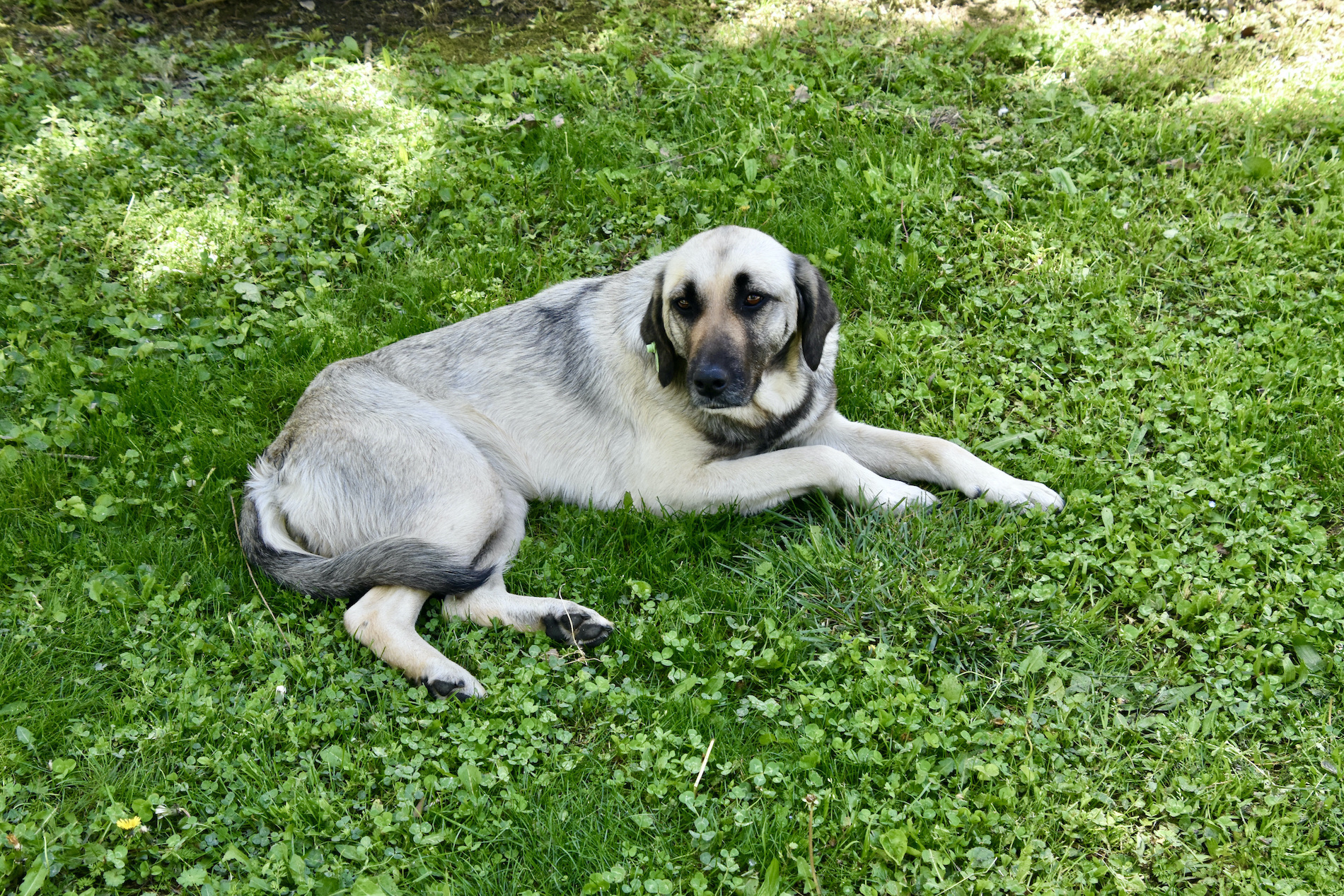
On that somewhat odd not, we’ll wrap up our visit to Edirne which lived up to my expectations in every way.
Tomorrow we say goodbye to Cigdem as we attempt a land crossing from Turkey to Greece, something that Victor predicts could be tricky. Join us and find out.


